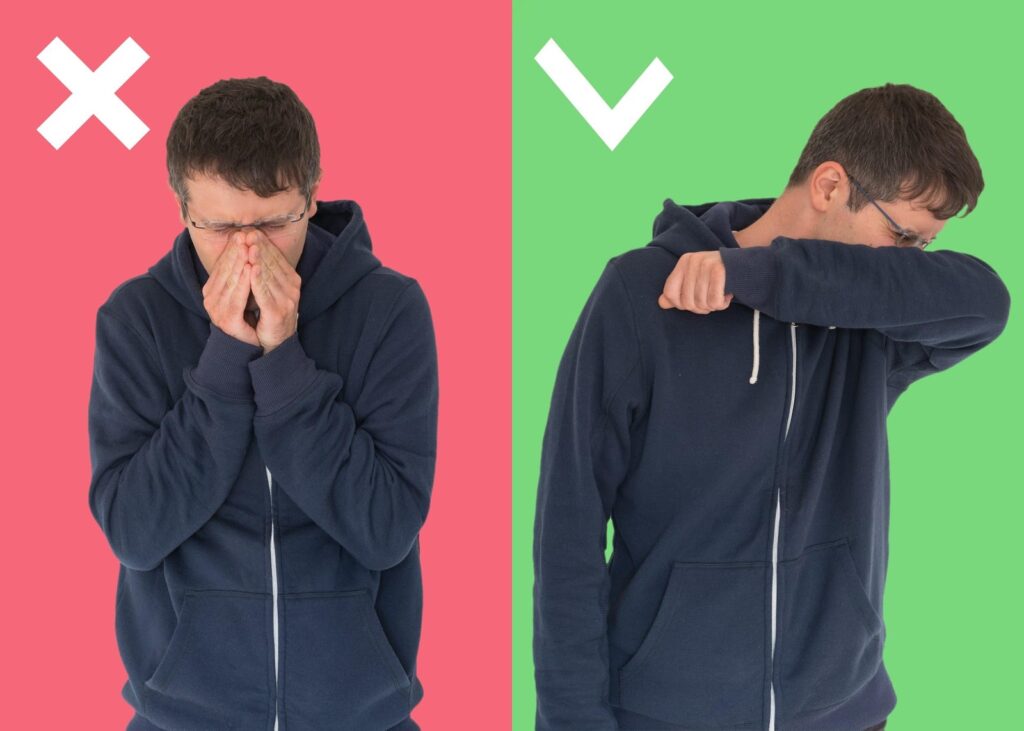One of the best ways to keep the COVID-19 virus from spreading is by practicing respiratory hygiene. As COVID-19 spreads from the transmission of infectious droplets from one person to another, it is important to break the chain by cutting the source of spreading itself.

It is also recommended to post visual alerts in public places for perfect awareness with the following messaging:
- Avoid close contact
- Stay home when you are sick
- Cover your mouth and nose (COVER YOUR COUGH)
- Clean your hands
- Avoid touching eyes, nose, and mouth
- Practice other good health habits

Why is Respiratory Hygiene important?
- People who are sick with cold or flu can potentially transmit the illness to others even before symptoms like sore throat and cough appear. So, it is important to practice proper respiratory hygiene like cough and sneeze etiquette all the time, even when you are perfectly healthy.
- When a person with a respiratory infection coughs or sneezes, he/she releases respiratory droplets that carry cold and flu virus particles that can cause infection if they enter another person’s respiratory tract.
- Another person may inhale these contaminated droplets released by an infected person’s coughing and sneezing. Or the droplets may land on a person’s hands or hard surfaces where the virus particles can survive for hours.
- Whenever another person touches these contaminated surfaces, the virus particles may be transferred to his/her hands and from there on, potentially to their respiratory tract – to cause infection.
- Hence for serious and possibly life-threatening disease as COVID-19 or novel coronavirus infection, following respiratory hygiene is essential.
What are the measures for good respiratory hygiene?
The following measures to contain respiratory secretions are recommended for all individuals:
- Try to step away from people when you feel an urge to sneeze or cough.
- Cover your mouth and nose with a tissue when coughing or sneezing at home or in public places.
- Use a wastebasket or a garbage bin to dispose of the tissue immediately after use. Do not throw it away carelessly.
- If you do not have a tissue, cover your mouth and nose with your bent elbow while sneezing or coughing.
- Avoid using a handkerchief as it becomes a place for breeding bacteria and viruses.
- Avoid touching your face with your hands after sneezing or coughing or if you are near someone who has sneezed or coughed. When one touches the face with unwashed, uncleaned hands, the cold and flu viruses get a chance to enter the mucous membranes of the nose and eyes and cause infection.
- Make sure to wash your hands with soap and water properly or use a hand sanitizer after having contact with respiratory secretions and contaminated objects or materials.
Follow good cough etiquette, which is a series of actions to be taken if one is coughing or sneezing, which are designed to reduce the spread of respiratory illness to others.
Conclusion
Coughing and sneezing are a body’s natural reaction to an allergy or infection. But since they can potentially transmit the disease to another person, we must not forget to follow respiratory hygiene always, and especially for a deadly infection like COVID-19. It is our social, moral, and human responsibility to prevent passing on respiratory infections to other people, even if it’s inadvertent.
Special thanks to Dr. ARUN MADHAB BORUAH (MD, Ph.D., FICOG, FICMCH) for expert advice.







